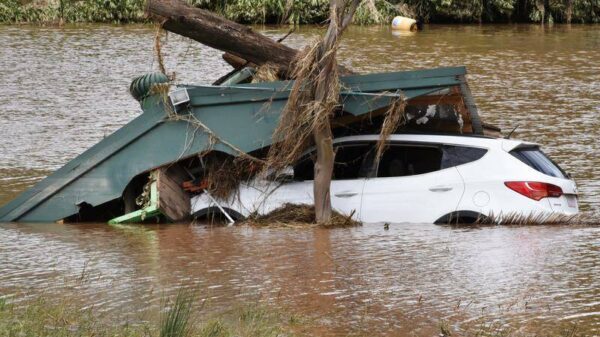The Colorado River faces a severe crisis as its flow continues to decline, raising concerns for the millions who depend on its water. States bordering the river have long divided its resources based on outdated assumptions from a century ago. As a result, the ongoing drought and changing climate conditions have exacerbated tensions over this vital supply. Recent reports highlight that Lake Powell, a crucial reservoir, could reach “dead pool” status by December 2023, which would hinder water releases downstream and disrupt hydroelectric generation affecting seven western states.
The water crisis is particularly alarming for the approximately 40 million people who rely on Lakes Mead and Powell for drinking water. If Lake Powell drops to critical levels, it would not only halt hydroelectric power generation—currently providing over 3,000 megawatts of energy—but also threaten the stability of the electric grid. Facilities at the Glen Canyon Dam and Hoover Dam are already operating below maximum capacity due to water constraints, leading to concerns about potential electricity shortages.
As water shortages become increasingly common due to overuse, groundwater pollution, and negligent agricultural practices, the implications extend beyond just water supply. The energy sector is now facing challenges that could significantly affect power generation. Hydropower remains a critical source of energy in many countries, including Brazil, Norway, and Canada, but the U.S. is facing a unique situation as it grapples with an aging electric grid that has not kept pace with demand.
Water scarcity can disrupt not only hydroelectric generation but also the cooling processes necessary for nuclear and fossil fuel power plants. For example, French utility EDF had to limit power generation at nuclear facilities due to jellyfish clogging water intakes—a situation linked to rising water temperatures. In August 2022, EDF curtailed operations at five nuclear stations because river water temperatures were too high for safe cooling.
The water industry has long raised alarms about the impact of climate change on water resources. Ironically, the electric industry, which contributes to climate change through its practices, may soon face the consequences of a water shortage. The financial burden of a power shortage will ultimately fall on customers, as utilities may need to raise rates to offset increased operational costs.
With an impending water crisis looming, the financial implications are significant. The power industry is in the early stages of a capital expenditure boom to support a societal shift towards electrification. This transition is expected to drive up power prices, given that new facilities are substantially more expensive than those built decades ago. With water shortages forcing utilities to rely more on higher-cost fossil fuel generators, operating costs are set to escalate.
As 2023 progresses, attention turns to the southwestern United States. If water levels in the reservoirs continue to plummet, the region could face a dual crisis of water and energy, coupled with rising costs for consumers. The potential for such a scenario highlights the urgent need for comprehensive water management strategies that address both current demands and future sustainability.
In conclusion, the ongoing situation with the Colorado River serves as a stark reminder of the interconnectedness of water supply and energy generation. As states grapple with the reality of dwindling resources, the implications for millions of residents and the broader economy could be profound.





























































